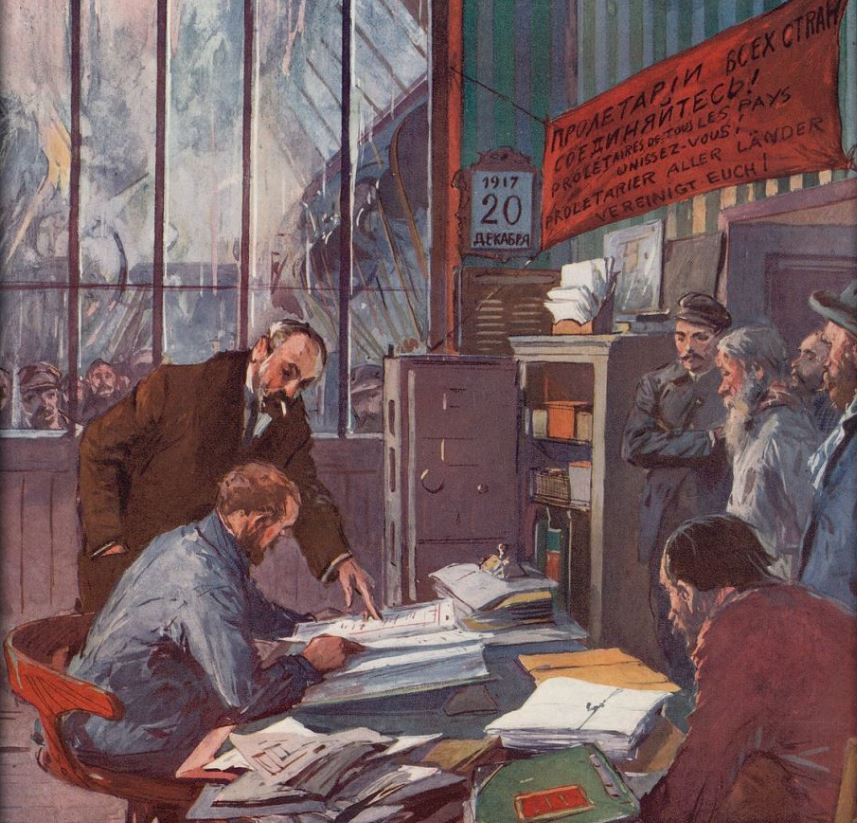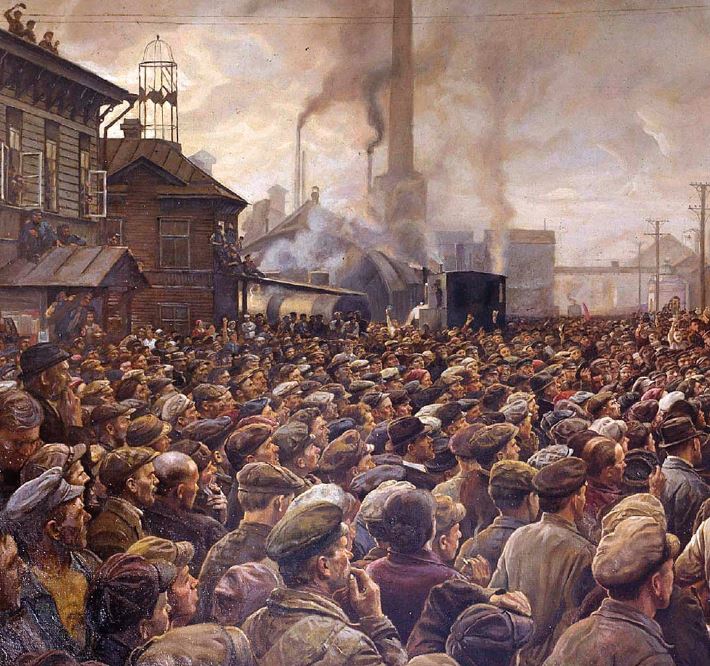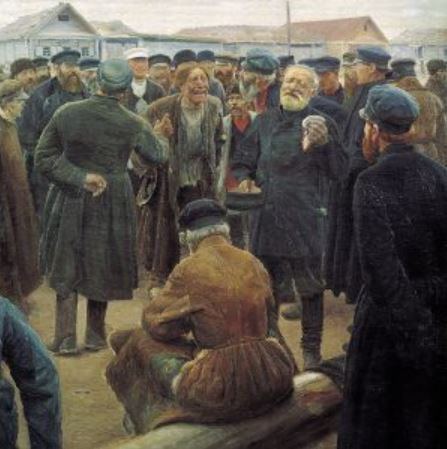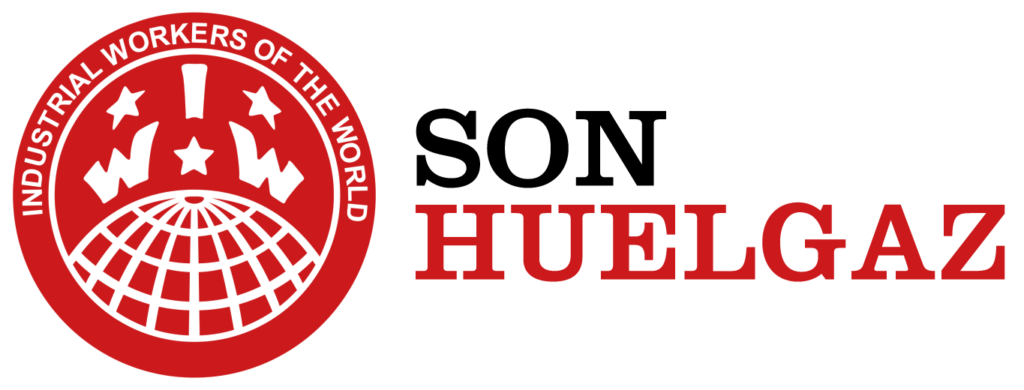
The following is a brief except from Sheila Fitzpatrick’s The Russian Revolution, written originally in 1979 and republished several times, with the 2008 version featured below. I was reading this book for school and just thought that the phrase “class antagonism” was really key. If workers in our country, and every country, could focus on uniting ourselves ‘as a class’ against the bosses ‘as a class’, rather than allowing ourselves to be divided, we could make a whole lot more progress toward gaining the things we need, and bring our society closer to the real prize – “the Emancipation of the working class from the slave bondage of capitalism”. Take a look at this passage and see if it doesn’t capture some important details for you, as it does for me. – JP
***
“Traditionally, Russia’s soldiers and sailors of 1917 have been categorized as ‘proletarians’, regardless of their occupation out of uniform. In fact most of the enlisted men were peasants, although workers were disproportionately represented in the Baltic Fleet and the armies of the Northern and Western Fronts, since their recruitment area was relatively industrialized. It can be argued in Marxist terms that the men in the armed forces were proletarian by virtue of their current occupation, but the more important thing is that this is evidently how they regarded themselves. As Wildman’s study indicates, front-line soldiers in the spring of 1917 – even when prepared to cooperate with officers who accepted the Revolution and the new norms of behaviour – saw the officers and the Provisional Government as belonging to one class, that of the ‘masters’, and identified their own interests as those of the workers and the Petrograd Soviet [worker’s council]. By May, as the Commander-in-Chief reported with alarm, ‘class antagonism’ between officers and men had made deep inroads on the army’s spirit of patriotic solidarity.

“The Petrograd workers had already demonstrated a revolutionary spirit in February, although they had not then been sufficiently militant or psychologically prepared to resist the creation of a ‘bourgeois’ Provisional Government. In the first months after the February Revolution, the main grievances expressed by workers in Petrograd and elsewhere were economic, focusing on bread-and-butter issues like the eight-hour day (which the Provisional Government rejected on the grounds of the wartime emergency), wages, overtime, and protection against unemployment. But there was no guarantee that this situation would continue, given the tradition of militancy in the Russian working class. It was true that the war had changed the composition of the working class, greatly increasing the percentage of women as well as somewhat increasing the total number of workers; and it was usually believed that women workers were less revolutionary than men. Yet it was women workers whose strike on International Women’s Day had precipitated the February Revolution; and those who had husbands at the front were particularly likely to object strongly to continuation of the war. Petrograd, as a centre of the munitions industry in which many skilled male workers had been exempted from military conscription, retained a comparatively large proportion of its prewar male working class in the factories. Despite the police round-up of Bolsheviks at the beginning of the war, and the subsequent arrest or military drafting of large numbers of other political troublemakers in the factories, Petrograd’s major metallurgical and defence plants were employing a surprisingly large number of workers who belonged to the Bolshevik and other revolutionary parties, and even Bolshevik professional revolutionaries who had come to the capital from Ukraine and other parts of the Empire after the outbreak of the war. Other revolutionary workers returned to their factories after the February Revolution, increasing the potential for further political unrest.
“The February Revolution had given birth to a formidable array of workers’ organizations in all Russia’s industrial centres, but especially in Petrograd and Moscow. Workers’ soviets were created not only at the city level, like the Petrograd Soviet, but also at the lower level of the urban district, where the leadership usually came from the workers themselves rather than the socialist intelligentsia and the mood was often more radical. New trade unions were established; and at the plant level, workers began to set up factory committees (which were not part of the trade-union structure, and sometimes co-existed with local trade-union branches) to deal with management. The factory committees, closest to the grass roots, tended to be the most radical of all workers’ organizations. In the factory committees of Petrograd, the Bolsheviks had assumed a dominant position by the end of May 1917.
“The factory committees’ original function was to be the workers’ watchdog over the plant’s capitalist management. The term used for this function was ‘workers’ control’ (rabochii kontrol’), which implied supervision rather than control in the managerial sense. But in practice the factory committees often went further and started to take over managerial functions. Sometimes this was related to disputes over control of hiring and firing, or was the product of the kind of class hostility that led workers in some plants to put unpopular foremen and managers into wheelbarrows and dump them in the river. In other instances, the factory committees took over to save the workers from unemployment, when the owner or manager abandoned the plant or threatened to close it because it was losing money. As such events became more common, the definition of ‘workers’ control’ moved closer to something like workers’ self-management.

“This change took place as the workers’ political mood was becoming more militant, and as the Bolsheviks were gaining influence in the factory committees. Militancy meant hostility to the bourgeoisie and assertion of the workers’ primacy in the revolution: just as the revised meaning of ‘workers’ control’ was that workers should be masters in their own plants, so there was an emerging sense in the working class that ‘soviet power’ meant that the workers should be sole masters in the district, the city, and perhaps the country as a whole. As political theory, this was closer to anarchism or anarcho-syndicalism than to Bolshevism, and the Bolshevik leaders did not in fact share the view that direct workers’ democracy through the factory committees and the soviets was a plausible or desirable alternative to their own concept of a party-led ‘proletarian dictatorship’. Nevertheless, the Bolsheviks were realists, and the political reality in Petrograd in the summer of 1917 was that their party had strong support in the factory committees and did not want to lose it. Accordingly, the Bolsheviks were in favor of ‘workers’ control’, without defining too closely what they meant by it.
“Rising working class militancy alarmed the employers: a number of plants were closed down, and one prominent industrialist cautiously expressed his opinion that ‘the bony hand of hunger’ might ultimately be the means of bringing the urban workers back to order. But in the countryside, the landowners’ alarm and fear of the peasantry was much greater. The villages were quiet in February, and many of the young peasant men were absent because of conscription for military service. But by May, it was clear that the countryside was sliding into turmoil as it had done in 1905 in response to urban revolution. As in 1905-6, manor houses were being sacked and burned. In addition, the peasants were seizing private and state land for their own use. During the summer, as the disturbances mounted, many landowners abandoned their estates and fled the countryside.”

